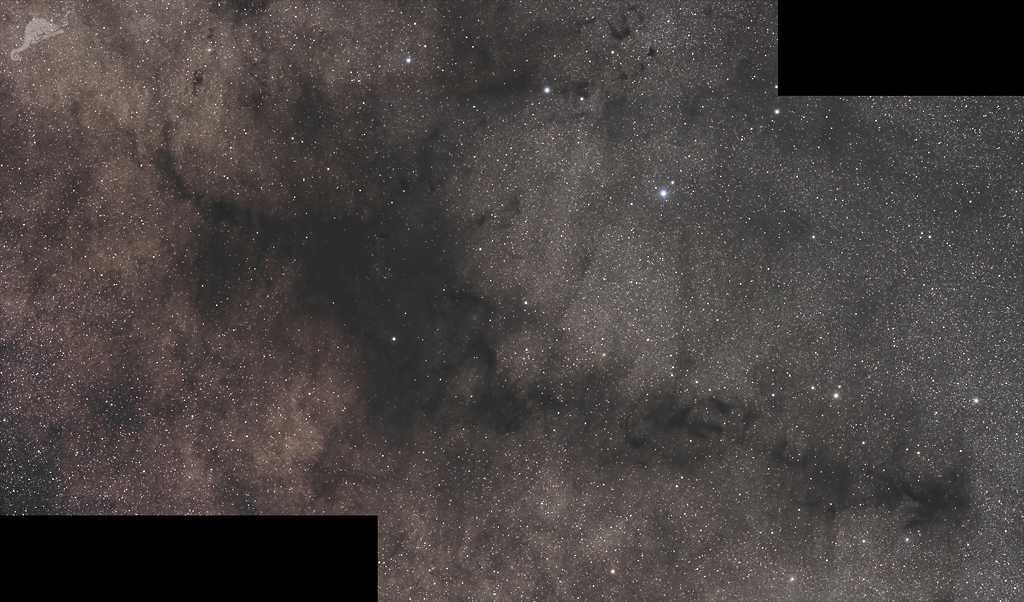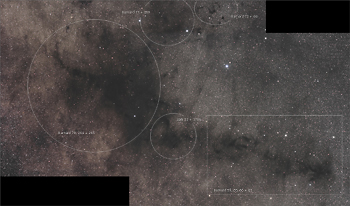 |
CHAMÄLEON + ONJALA OBSERVATORY DeepSky | SITEMAP HOME CHAMÄLEON |
|
 |
|||
| « back to overview Nebula | Load higher resolution (1800 x 1100 Pixel) (3500 x 2100 Pixel) | Object description |

Our 2-part mosaic shows (image orientation: north up and east left) one of the most impressive dark nebula complexes in the constellation of the Serpent Bearer - the so-called Pipe Nebula. It is named after the black dust clouds that make it look like a smoking pipe. It consists of several separate dark nebulae, partly assigned to the catalog numbers Barnard 59, 65, 66 and 67. Numerous dark nebulae are named after the American astronomer Edward Emerson Barnard, as he was the first to thoroughly document this class of objects. Among the nebulae Barnard cataloged are also some that Beverly T. Lynds later included in her catalog.
The dark nebula Barnard 77 and 78 form the "Pipehead", Barnard 59, 65, 66 and 67 form the "Pipestalk". North of the Pipe stem (at the top of the image) snakes Barnard 72 - the Snake Nebula, and just below it to the right is the compact dark cloud Barnard 68.
Der Pfeifennebel covers an area of nearly 6.5°×4.5°. It is the closest dark nebula complex to us, at a distance of about 500 light-years, and is located in front of the center of the Milky Way. Thus, it obscures the view of the stars behind it. Astronomers of the last centuries assumed that such areas are free of stars. Today we know that here dense clouds of interstellar dust obscure the light of the stars behind. So also the Pipe Nebula stands out as a dark silhouette in front of the bright stars.
 |
The dark nebula catalogs of Edward. E. Barnard and Beverly
T. Lynds Edward. E. Barnard was an exceptionally gifted visual observer and astrophotographer and one of the first to use long exposures for dark nebula studies. His catalog can be found at this URL. Beverly T. Lynds published her dark nebula catalog - much later - in 1962 with the title "Catalogue of Dark Nebulae". The catalog with the designations of the dark nebulae LDN - Lynds Dark Nebulae (not to be confused with LBN - Lynds Bright Nebulae) was based on a survey of the plates of the Palomar Observatory Sky Atlas in the red and blue spectral range and covers the sky from declination +90° to -33°. For each Barnard number there is a corresponding LDN number. We show details of the Pipe Nebula here and Barnards 72 - the Snake Nebula here. Click here |
 |
 |
 |
 |
 |
 |
 |
| Sun | Moon | Solar System | DeepSky | Widefield | Miscellaneous | Spec. Projects |